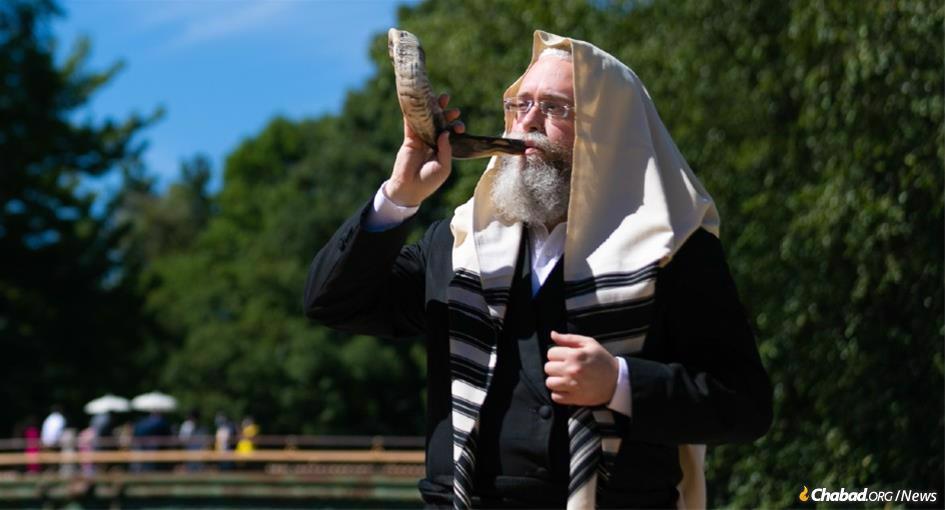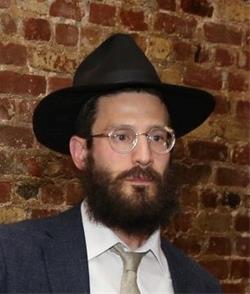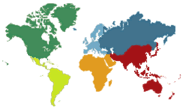As Rosh Hashanah approaches amid the global COVID-19 pandemic, Chabad-Lubavitch around the world is responding by increasing and expanding High Holidays services and activities everywhere. While there’s obviously no replacement for the traditional model of a synagogue, a congregation and a rabbi, Chabad rabbis are creatively rallying to broaden the tent of engagement around the High Holidays this year as never before.
While there will be thousands of outdoor services and shofar soundings, not everyone will be able to attend Rosh Hashanah services or socially-distanced gatherings, even if they are outdoors with adequate safety precautions. Elderly and others with compromised immunity are encouraged to avail themselves of a host of tools. The global Jewish website, Chabad.org, has arranged an extensive amount of online material to prepare for at-home prayer—including a new course on how to blow the shofar—as well as a database for those wishing to arrange house calls for shofar-blowing (similarly to how the Megillah was read for Purim outside people’s homes when the outbreak just began), as part of an expanded High Holidays services directory offering a host of other innovative local solutions at local Chabad centers around the world.
Among the many people who are looking forward to Rosh Hashanah in completely unexpected ways this year are Talia and Jonathan Rapps, who were excited to meet the Ventura County Jewish community when they decided to make the move last spring from the Katamon neighborhood of Jerusalem to Oxnard, Calif.
But like so much else this year, everything was upended when the coronavirus pandemic hit. After a tumultuous few months that saw Talia stay behind in Israel after her husband departed for the Golden State to begin his psychiatric residency, they finally reunited in Oxnard a few weeks ago. Alas, their expectations to meet the Jewish community were shattered.
Now, as the High Holidays are around the corner, Talia is looking forward to something personal and meaningful. While Zoom is great—providing a much-needed platform for virtual classes and many life-cycle events—the long stretch of isolation and virtual experiences have become exhausting.
As families with children holed up at home for months or others without vital support systems can attest, it can be said that the Jewish community has reached a phase that can only be described as “Zoomed out.” The steep toll on mental health and other challenges have left many pining for a moment—if even only briefly and distantly (in the “social distancing” sense)—to come together. The promise of renewal embedded in the High Holiday season is therefore a blessed and welcome prospect.

Talia and many others around the globe are confident that come what may, there will be some sort of safe, in-person service in which they can participate, inserting a small semblance of normalcy into the “New Normal.” Indeed, Chabad-Lubavitch centers around the world are intensively planning just how to make that happen in the midst of an ongoing pandemic that might result in a second wave in the fall. This includes Chabad of Oxnard, headed by Rabbi Dov and Rochel Muchnik.
“Before we moved, I heard how Chabad here organizes a large lunch and shofar-blowing service, together with tashlich right on the beach every year. It’s a highlight for many in the community, and I was looking forward to experiencing it myself,” said Talia. While the goalposts are constantly changing with the pandemic fluctuating so erratically, she’s hopeful that a socially distanced, masked version of the outdoor event will take place this year, providing that meaningful and personal touch.
“I am in touch with the facility on the beach that we work with annually and while things are obviously still uncertain, we’re monitoring the situation and remain optimistic. Whatever it is, the High Holidays this year will be just as meaningful as it is every year,” Rabbi Muchnik told Chabad.org.
Expanding High Holiday Services
The High Holidays have long been an incredibly important time on the Jewish calendar. These Ten Days of Repentance from Rosh Hashanah through Yom Kippur are a somber and momentous period that conjure up images of packed synagogues, including many who may otherwise not regularly attend, and passionate and inspiring sermons from rabbis who prepare for weeks prior. While Passover, Lag BaOmer, Shavuot, Tisha B’Av and so many other personal and communal moments went by this year in various levels of quarantine, Jewish life flexed its resilience, somehow managing to continue amid all the distancing.
But with a Jewish community at peak levels of Zoom fatigue, coupled with the reality that electronic media is forbidden by Jewish law on the High Holidays, how will people participate in service, sermons and shofar?
“Of course, I would love to see nothing less than a jam-packed synagogue, but that’s not going to happen,” said Michael Stoll of Houston. “Still, I’m happy that Chabad of Uptown here in Houston with Rabbi Chaim and Chanie Lazaroff are coming up with creative and safe solutions. Be it the multiple smaller-scale minyans with social distancing around the neighborhood, or a shofar-blowing from the balcony of the Chabad, I’m looking forward to a High Holidays that are personable and engaging,” he said.

Making Shofar Accessible to All
While many are of the impression that the High Holidays are all about services, sermons and yearly pledges, as early as 1953 the Rebbe—Rabbi Menachem M. Schneerson, of righteous memory—insisted that regardless of synagogue attendance, every Jewish person should hear the shofar on Rosh Hashanah, encouraging individuals to visit places like hospitals and blow shofar for those who otherwise would not hear it. The Rebbe taught that the shofar carries with it the true message of the day—a day when Jews recognize G‑d’s authority over the world and turn to Him for a blessed year in all areas of life. Just as it is with an earthly king who is coronated amid much pomp and celebration, his reign heralded with trumpet blasts and other proclamations, so it is with the Jewish approach to G‑d’s kingship over this world—announced with the raw blast of the shofar.
The Rebbe intensified his shofar campaign in the mid-1970s, extending it to the whole month of Elul preceding Rosh Hashanah, and ever since rabbis, rabbinical students and myriad volunteers have been bringing the shofar to the most diverse places, hospitals, army bases, prisons and street corners. A variation on this theme have been the “Shofar in the Park” events organized for years by Chabad centers around the world, which have allowed more and more people to gather in public spaces and hear the piercing cries of the shofar.
That everything is in G‑d’s hands has been one of the resounding lessons the world has learned over the course of these wild times. With one fell swoop, the global economy was upended, entire countries put in lockdown, leaving the medical and scientific community stretched to the limit coping with a novel virus.
Marika Feuerstein, a real estate agent in Boston, has been thinking about the upcoming holidays. Familiar with the events and activities of Chabad’s Chai Center in Boston with Rabbi Mayshe and Shifra Schwartz, she’s anticipating an engaging and spirited High Holidays. Feuerstein likes how Chabad is thinking out of the box. “While Shofar in the Park is great, some people are signing up for private shofar visitations in their home,” she notes. “Others are meeting up with social distancing on street corners all across the city and will be visited by rabbinical students or other community members who will blow shofar for them.”
Feuerstein is looking forward to spending these High Holidays during a global pandemic with others, albeit in a somewhat different setting than in the past. “You know, so much of the High Holidays is about hope, a new year, and it’s really something that must be done together, and I’m grateful to Chabad for making that happen.”
Expanded Rosh Hashanah Directory
While Chabad has been doing such shofar visitations for decades, this year it will be on an unprecedented scale. To ensure that every Jew can participate in High Holiday services, wherever and however they may be, Chabad.org is launching a global database of the broad catalog of services being offered by Chabad centers around the world, in addition to its wealth of inspiration and information about the holidays. Every year the site hosts the largest directory of free High Holiday services around the world. This year, it won’t just be free synagogue services; it will be the largest directory of all services, including for people who can’t make it to synagogue for traditional full-length prayers.
Indeed, as the Rebbe taught, the High Holidays is when Jews ask for blessing not just for their own personal lives, but for the entire world. Embedded in the prayers of these awesome days is the request for global peace and health—requests that are so prevalent this year as the world buckles under the pressure of an unprecedented virus and its consequences. For many, these long months of spring and summer have been frightening at best, and the dawn of a new year brings with it hope for a brighter future.
The global impact of the pandemic and resulting fallout is something never before seen. Everyone has been affected in some way, and the message of the High Holidays is all the more important. So while so many are “Zoomed out” and thinking of what will be, Chabad is bringing a non-virtual, real world service to them.
Be it a small social-distanced minyan outdoors, a shofar-blowing on a street corner or a pre-holiday visit with the holiday essentials all ready to go, in the most important ways this year will be no different than any other. In fact, there’s no reason it can’t be even better—offering a chance to peek out from the challenges of the past and break out into the promise of the future.









Join the Discussion